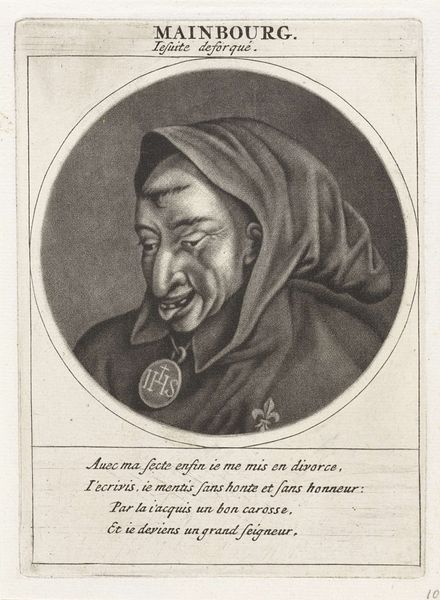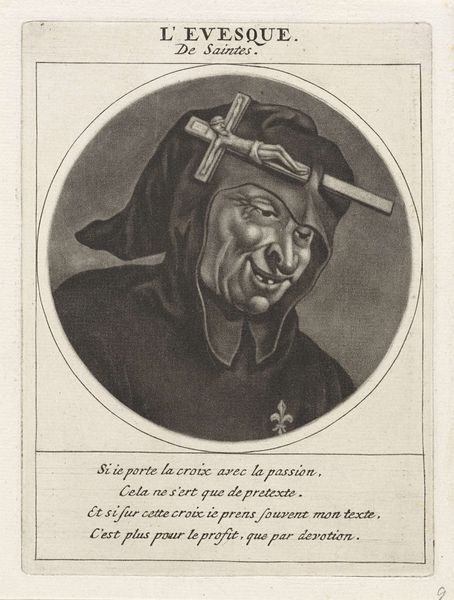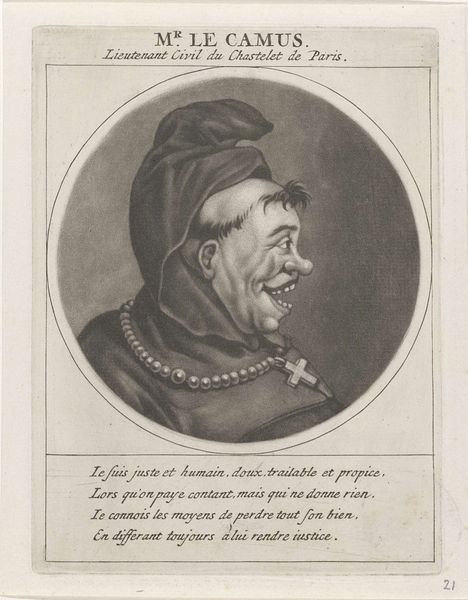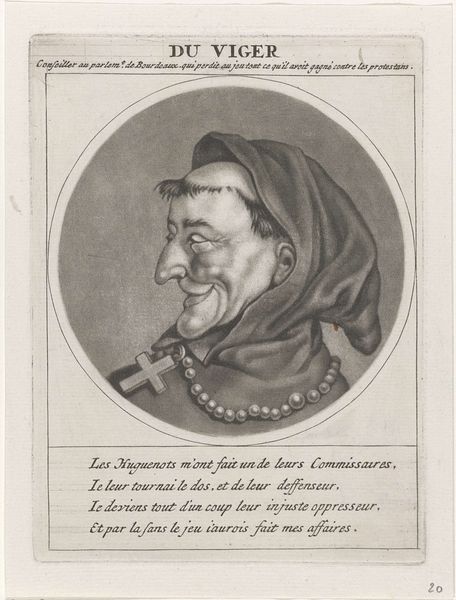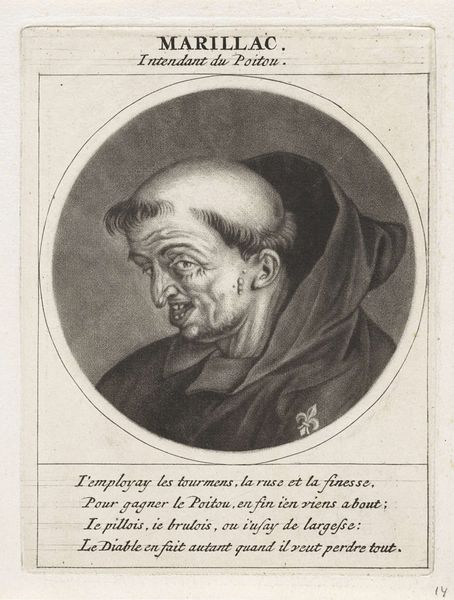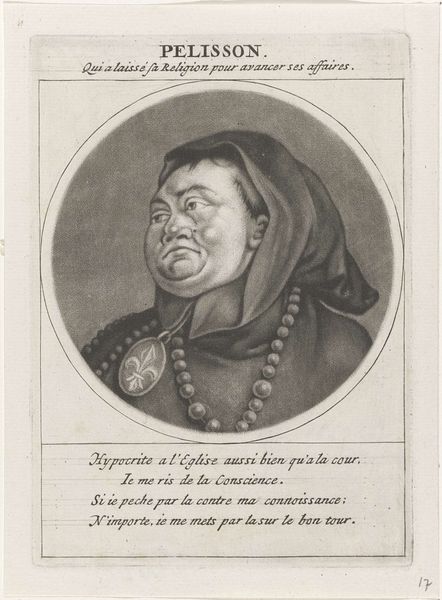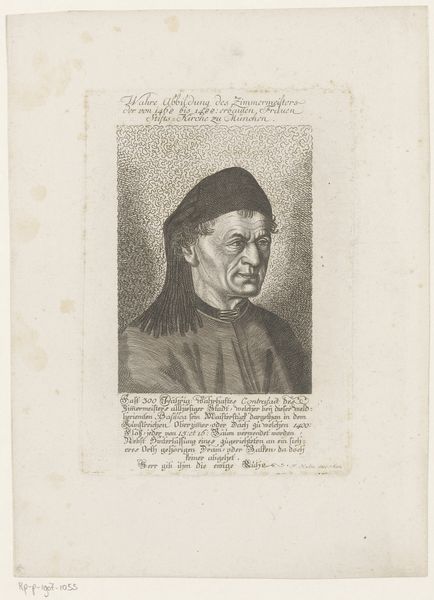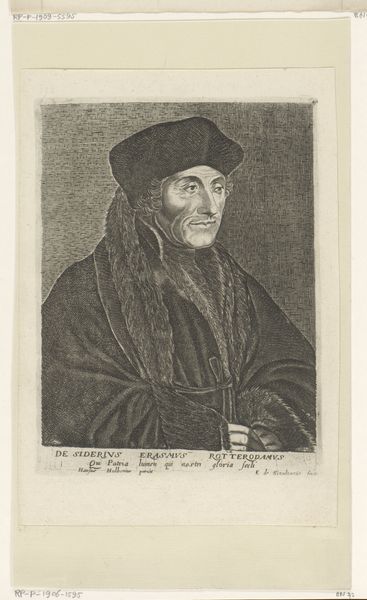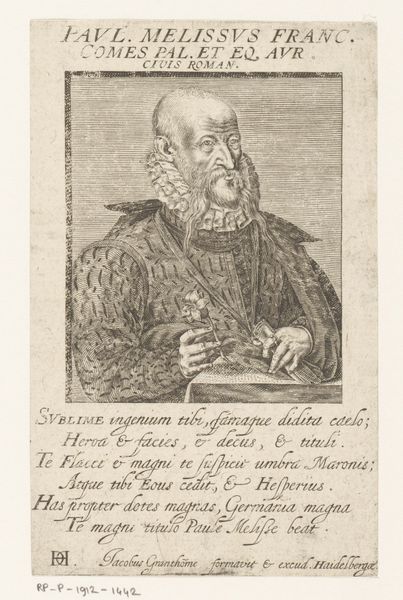
print, etching, engraving
#
portrait
#
baroque
# print
#
etching
#
engraving
Dimensions: height 146 mm, width 107 mm
Copyright: Rijks Museum: Open Domain
Curator: Here we have Jacob Gole’s “Portret van Michel Le Tellier,” an etching and engraving from 1691 housed here at the Rijksmuseum. Editor: My first thought? Intense! There’s a weariness in those lines around his eyes, but also something shrewd, almost cunning. It's a very unflattering image. Curator: Gole was working with the printmaking technologies available at the time—etching and engraving allow for the reproduction and dissemination of images on a mass scale, which is interesting in this context. Portraits like these functioned almost like trading cards for the elite! They showcase power and status, even if, as you say, this one is far from flattering. Editor: Indeed! This image implicates Le Tellier with its pointed caption. As Chancellor of France under Louis XIV, Le Tellier was instrumental in the revocation of the Edict of Nantes. Curator: Precisely. Etchings and engravings were becoming increasingly accessible and served many functions, but ultimately, this image and its inscription would be commodities created for profit by Gole in his workshop. We should also examine how Gole might have worked on and marketed similar pieces during this era to explore a pattern in production that might speak to artistic skill or economic opportunity. Editor: Absolutely, and the poem beneath, ostensibly spoken from Le Tellier's perspective, reinforces a very particular historical narrative: it implies his actions were motivated by pleasing the king, by personal gain, not piety. So this print becomes a form of political commentary, actively participating in shaping historical memory and critiques the power dynamics of the era. The printing makes this political statement all the more effective through a multiplied and repeatable accusation. Curator: It seems that this work showcases the development and accessibility of printed matter—as something much more multifaceted than a simple technical progression. Editor: Yes, it highlights how artistic representation intersects with political motivations, inviting us to consider whose stories are told and how, challenging conventional power dynamics, even centuries later.
Comments
No comments
Be the first to comment and join the conversation on the ultimate creative platform.
